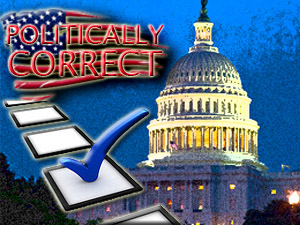The Truth About The Economy

The economy is the single most important issue in this race. However, economic information is presented in a sensational way by both campaigns and the media. Here are the basics:
There are two key economic indicators that economists use to understand economic trends. The first is the employment rate, which measures job growth and the number of people who have work. 2009 witnessed the worst year for job growth since the recession started back in 2007. By the end of 2009, and the first year of the Obama administration, the economy lost 4.2 million jobs. Since then, we have seen a steady increase in job growth, totalling 4.2 million new jobs since the beginning of 2011.
The second key economic indicator is the unemployment rate. One misconception about the unemployment rate is that it measures the amount of Americans who are out of work. The unemployment rate only measures those who have been out of work for more than four weeks and who are actively looking for a new job. It doesn't measure people who have been temporarily laid off of who have given up looking for work (known as discouraged workers). In addition, the unemployment rate isn't a good indicator of future economic growth. It is a lagging indicator and only shows us where we have been, not where we are going.
The unemployment rate peaked at 10.2 percent in October 2009. This is significant because unemployment hasn't been at the 10 percent mark since the recession in 1981. Since 2009, the unemployment rate has been dropping steadily. In 2012 the unemployment rate is projected to stay above 8 percent. In 2013 it is expected to stay at 7 percent, and 6.5 percent in 2014. After 2014 the unemployment rate is supposed to level off at about 6.5 percent.
It is also important to understand the economic timeline post 2008 in order to make sense of the economy today. Both candidates talk a lot about the spiraling national debt. The national debt level is a percentage of the total countries production, gross domestic product, which was $15.6 trillion as of the first quarter of 2012. Today the debt-to-GDP ratio is now 102 percent compared to 51 percent in 1988.
But the national debt is only one tick mark in our economic history. The first big crisis of the recession was the housing crisis. In a nutshell, the housing crisis took effect because banks were approving mortgages of people who couldn't afford to pay of their mortgages in the long run. The recession applied this inconsistency and gave us the housing crisis. Since the housing crisis imploded, there have been one million foreclosures all across the country. New home construction contributes 10 percent to the economy. However, foreclosed homes are halting construction jobs. The slow turnover process of foreclosed homes has keep housing prices depressed, limiting the need for new homes.
Next came the Obama stimulus package in February of 2009. The $787 billion dollar stimulus package took effect to jumpstart the ailing economy. It was designed to be spent over 10 years, with 91.5 percent of the funds spent within the first three fiscal years.
The stimulus allocates $288 billion in tax cuts, $224 billion in extended unemployment benefits, education, healthcare, and $275 billion for job creation using federal contracts, grant and loans. Overall, the stimulus package has been viewed as a success. The goal was to save 900,000 to 2.3 million jobs and as of October 2009; it had already saved 640,329 jobs.
Lastly, it would be useful to understand the different positions the two candidates have taken on the economy.
In 2011, Obama created his JOBS Act in order to help the economy further. This bill didn't ever pass but it does highlight where he stands on the economy. The JOBS bill intended to extend the payroll tax cuts, which eventually happened organically, independent of the bill. It also had a provision to cut taxes on small businesses that hired long-term unemployed people. Additionally, the JOBS Bill aimed to extend unemployment benefits. Every one billion spent on unemployment benefits creates 19,000 new jobs.
Romney's economic plan is more theoretically based than based in facts. Romney intends to reduce the corporate income tax rate by 25 percent, cut non-security discretionary spending by 5 percent, which is intended to reduce the annual federal budget by $20 billion. Romney also intends to cut Obama-era business regulations.
Reach Staff Reporter Alexis Miller here.



